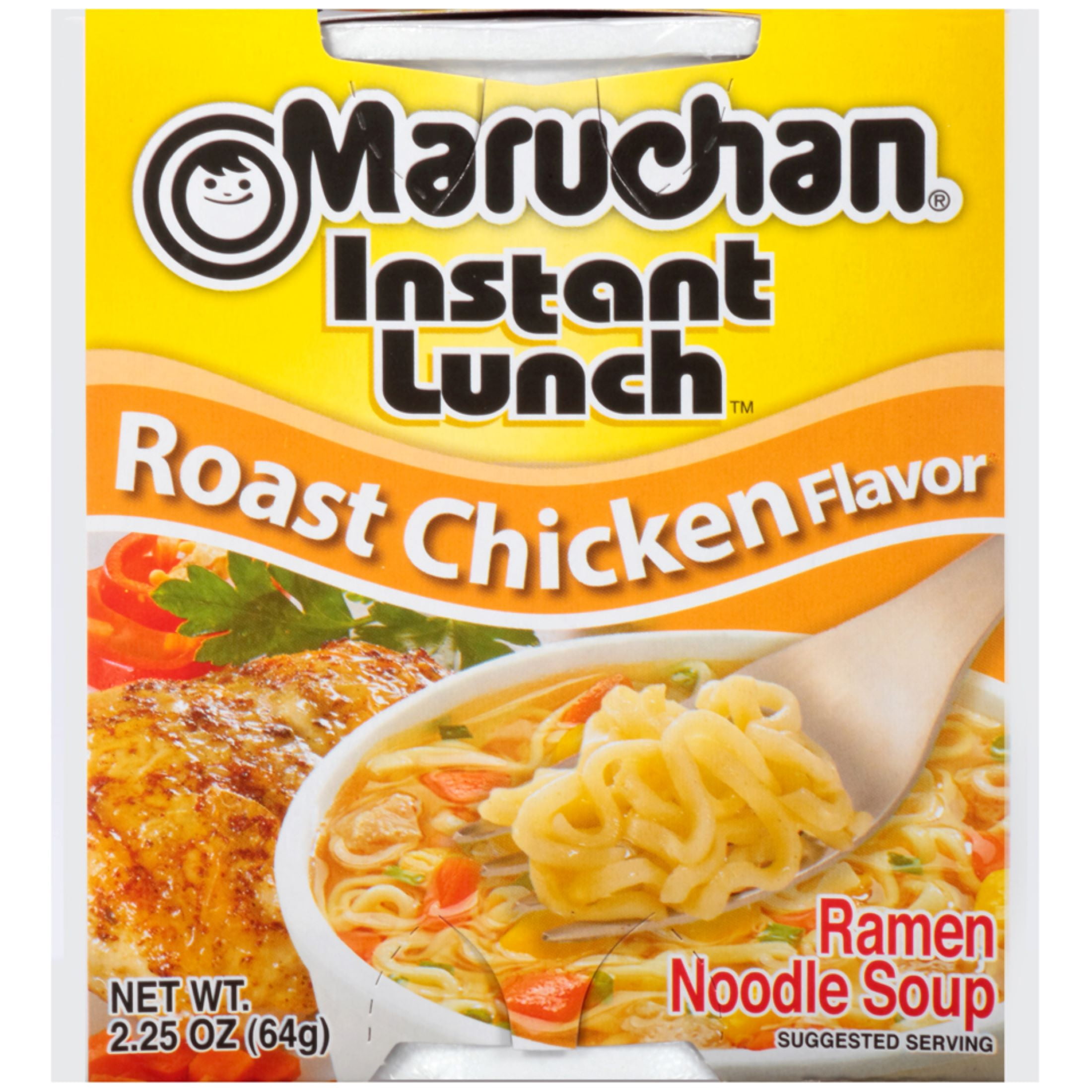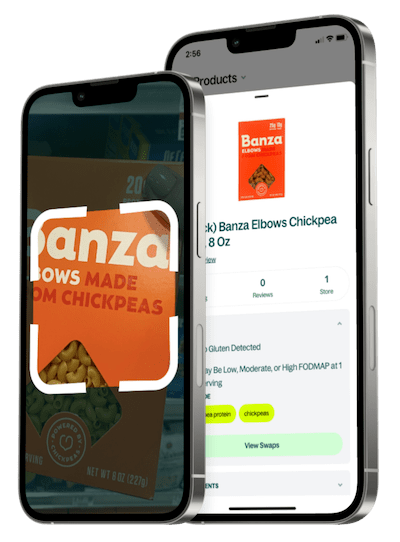Is Maruchan Instant Lunch Roast Chicken Flavor Ramen Noodles, 2.25 oz Shelf Stable Cup Gluten Free?

Description
Instant cup ramen delivers a savory roast-chicken flavor and clear, flavorful broth accompanying thin, springy noodles that soften quickly. Commonly used as a fast snack or light meal, consumers note convenience, portability, low cost and consistent taste, while reviews occasionally mention an overly salty profile and simple texture and nostalgia.

Description
Instant cup ramen delivers a savory roast-chicken flavor and clear, flavorful broth accompanying thin, springy noodles that soften quickly. Commonly used as a fast snack or light meal, consumers note convenience, portability, low cost and consistent taste, while reviews occasionally mention an overly salty profile and simple texture and nostalgia.
Ingredients
Enriched Wheat Flour (Wheat Flour, Niacin, Reduced Iron, Thiamine Mononitrate, Riboflavin, Folic Acid), Vegetable Oil (Contains One Or More Of The Following: Canola, Cottonseed, Palm), Preserved By Tbhq, Salt, Dehydrated Vegetables (Corn, Carrot, Onion, Garlic, Chive), Contains Less Than 2% Of: Maltodextrin, Monosodium Glutamate, Textured Soy Protein, Sugar, Chicken Fat, Powdered Cooked Chicken, Dehydrated Soy Sauce (Wheat, Soybeans, Salt), Hydrolyzed Corn, Wheat And Soy Protein, Natural And Artificial Flavors, Spices (Celery Seed), Yeast Extract, Potassium Carbonate, Sodium (Mono, Hexameta,, Tripoly), Phosphate, Sodium Carbonate, Turmeric, Disodium Inosinate, Disodium Guanylate, Silicon Dioxide (Anti-caking Agent), Caramel Color, Chicken Broth, Lactose, Soya Lecithin, Contains Wheat, Soy And Milk , Manufactured In A Facility That Also Processes Crustacean Shellfish Products
What is a Gluten Free diet?
A gluten-free diet excludes all foods containing gluten, a protein found in wheat, barley, rye, and their derivatives. It's essential for people with celiac disease, gluten intolerance, or wheat allergy, as consuming gluten can trigger inflammation and digestive issues. Common gluten-containing foods include bread, pasta, cereals, and baked goods, though many gluten-free alternatives now exist using rice, corn, or almond flour. Beyond medical necessity, some people choose a gluten-free lifestyle for perceived health benefits, though experts emphasize the importance of maintaining a balanced diet rich in fiber, vitamins, and minerals when eliminating gluten-containing grains.
Similar Products
MARUCHAN RAMEN NOODLE SOUP CHICKEN FLAVOR
Maruchan Instant Lunch Chicken Flavor Ramen Noodles, 2.25 oz Shelf Stable Cup
Maruchan Chicken Flavor Ramen Noodle Soup, 12-3 oz Packages
Maruchan Ramen Noodle Soy Sauce Flavor Soup, 3 oz Shelf Stable Package
Nissin The Original Cup Noodles Chicken Flavor Ramen Noodle Soup, 2.25 oz


